All equations of the form a x 2 b x c = 0 can be solved using the quadratic formula 2 a − b ± b 2 − 4 a c The quadratic formula gives two solutions, one when ± is addition and one when it is subtraction x^ {2}yxy^ {2}=4 x 2 y x y 2 = 4 Subtract 4 from both sides of the equationHola mi gente, en este video comprobaremos que la ecuación diferencial (xyy^2x^2)dxx^2dy=0 es homogénea y a su vez hallaremos su solución generalPor favoStart with $(x y)^2$, multiply out to get $x^2 y^2 xy yx$ and then collect like terms to get the normal form $x^2 2xy y^2$ "Multiplying out and collecting like terms" is a decision procedure for this kind of problem

Misc 7 Show That General Solution Is X Y 1 A 1 X Y 2xy
X^2+xy+y^2 formula
X^2+xy+y^2 formula- · x^2xyy^2 = 1 (xy)(xy)=1 (Factored) (xy)^2=1 (Rewritten) xy=1 or xy=1 because a square root can be a positive or a negative (Square root both sides) y= x1 y= x1 (simply rearrange the variables using algebra) y = {(x1),(x1)} < ANSWERFor any fixed $y$, the solutions of $x^2xyy^2=0$ are $$x=\frac{y \pm\sqrt{3y^2}}{2}$$ If $y\ne 0$, the number under the square root sign is negative, and therefore $\sqrt{3y^2}$ is not a real number, so $x$ is not a real number



Multiply X 2 4y 2 2xy 3x 6y 9 By X 2y 3
Hint go the other way!This formula is also referred to as the binomial formula or the binomial identity Using summation notation , it can be written as ( x y ) n = ∑ k = 0 n ( n k ) x n − k y k = ∑ k = 0 n ( n k ) x k y n − k {\displaystyle (xy)^{n}=\sum _{k=0}^{n}{n \choose k}x^{n · It can be factored as x^2 y^2 = (xy)(xy) Notice that when you multiply (xy) by (xy) then the terms in xy cancel out, leaving x^2y^2 (xy)(xy) = x^2xyyxy^2 = x^2xyxyy^2 = x^2y^2 In general, if you spot something in the form a^2b^2 then it can be factored as (ab)(ab) For example 9x^216y^2 = (3x)^2(4y)^2 = (3x4y)(3x4y)
Free math problem solver answers your algebra, geometry, trigonometry, calculus, and statistics homework questions with stepbystep explanations, just like a math tutor · x^2 xy y^2 = 1 Find the largest value of y which satisfies the above equation and the corresponding value of x (x is real) · #(x^2y^22xy)(xy)=x^3x^2yxy^2y^32x^2y2xy^2# #rArr x^3y^33x^2y3xy^2# Always expand each term in the bracket by all the other terms in the other brackets, but never multiply two or more terms in the same bracket
Derivative x^2(xy)^2 = x^2y^2 Extended Keyboard;Show, by left side, that $$\frac{x^3y^3}{xy} = x^2xyy^2,$$ or $$\frac{x^3y^3}{x^2xyy^2} = xy$$ You may read about "Long Division of Polynomials" See also LINK for knowing the processFactor x^2xyxy Factor out the greatest common factor from each group Tap for more steps Group the first two terms and the last two terms Factor out the greatest common factor (GCF) from each group Factor the polynomial by factoring out the greatest common factor, Rewrite as



Misc 4 Prove X2 Y2 C X2 Y2 2 Is General Solution Of



Ex 9 3 2 Form Differential Equation Y2 A B2 X2
Please Subscribe here, thank you!!!X^2y^2z^2xyyzzx=0 multiplying the RHS and LHS by 2 we get , 2 x^2y^2z^2xyyzzx =0 or, (xy)^2(yz)^2(zx)^2=0 since in LHS there are only squared terms,ie they cannot beX y = 2 Squaring both sides (x y) ^ 2 = 2 ^ 2 x^2 y^2 2xy = 4 As x^2 y^2 = 2 (given), 2 2xy = 4 2xy = 2 xy = 1 That's your answer Hope it helps!
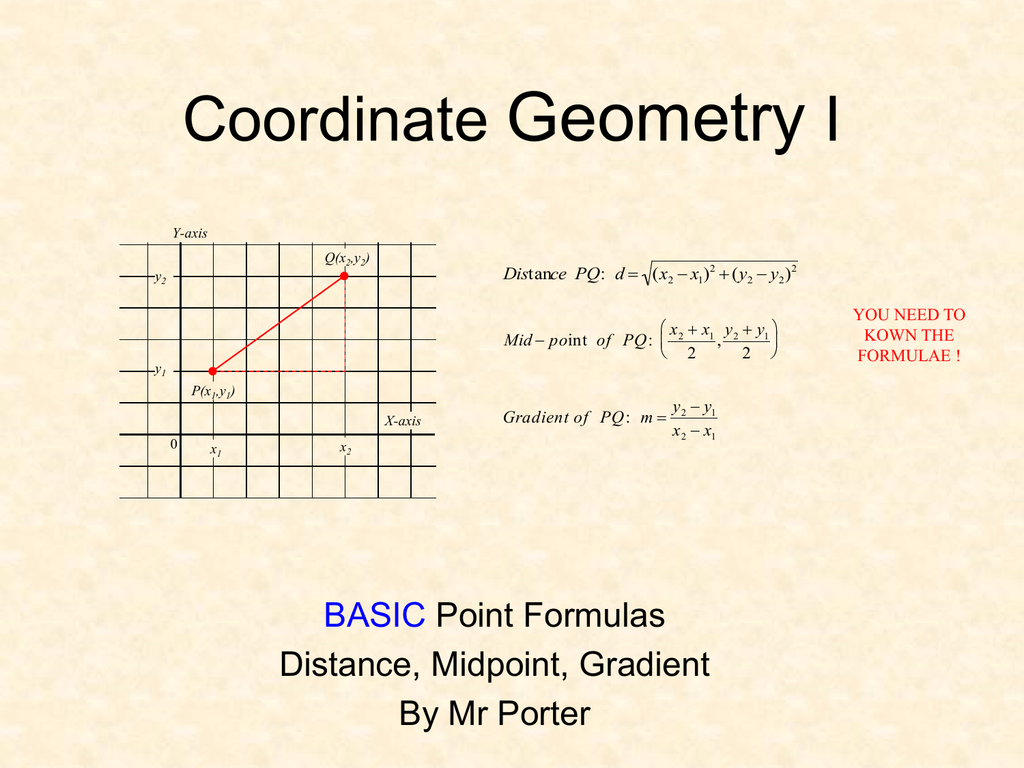


Coordinate01
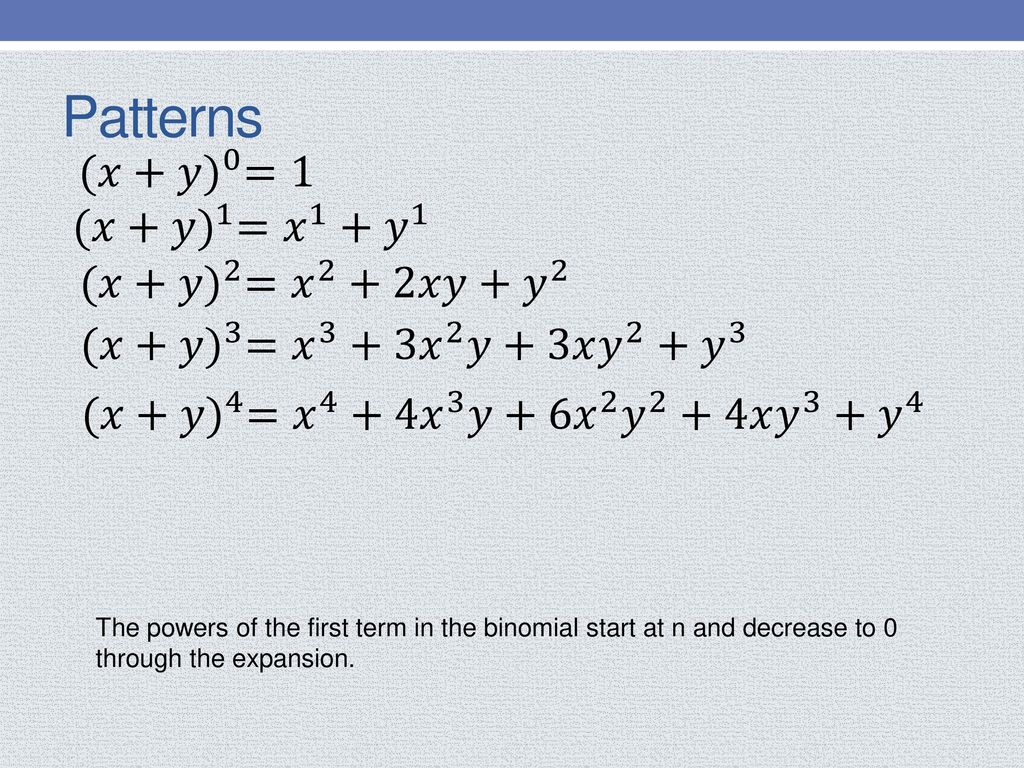


A Quick And Efficient Way To Expand Binomials Ppt Download
Adding fractions that have a common denominator 22 Adding up the two equivalent fractions Add the two equivalent fractions which now have a common denominator Combine the numerators together, put the sum or difference over the common denominator then reduce to lowest terms if possible x2 • x (y2) x3 y2This is always true with real numbers, but not always for imaginary numbers We have ( x y) 2 = ( x y) ( x y) = x y x y = x x y y = x 2 × y 2 (xy)^2= (xy) (xy)=x {\color {#D61F06} {yx}} y=x {\color {#D61F06} {xy}}y=x^2 \times y^2\ _\square (xy)2 = (xy)(xy) = xyxy = xxyy = x2 ×y2 For noncommutative operators under some algebraic · Favorite Answer x^2xy y^2 this equation can't be factor because there is no two numbers whose product and sum is one RealArsenalFan Lv 4 1 decade ago You can use a method called "completing a square" Your signs look a bit strange However, after completing a square you will have an answer that looks like this,



Separable Differential Equation Dy Dx Xy 3x Y 3 Xy 2x 4y 8 Youtube
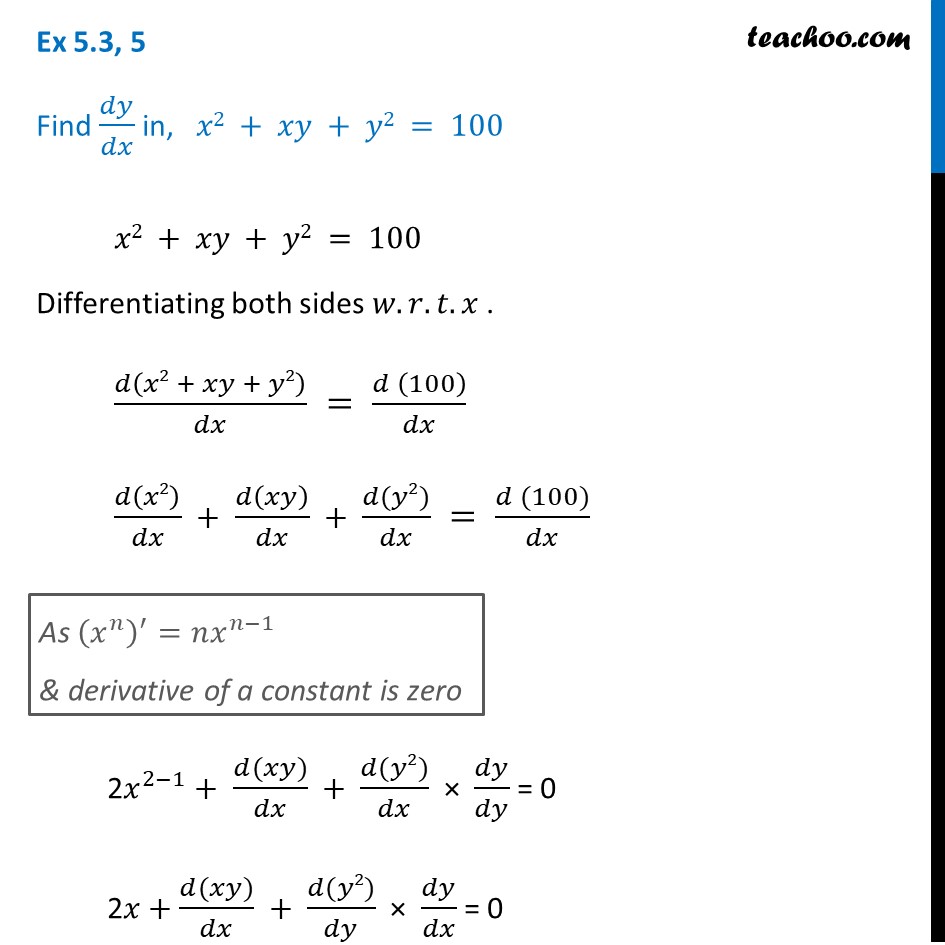


Ex 5 3 5 Find Dy Dx In X2 Xy Y2 100 Class 12
Xy=12, (x^2y^2)=25 then what is the value of (xy)2^2;Find the solution of the differential equation that satisfies the given initial conditionxy' y = y^2, y(1) = 1X^2 y^2 = x^2 2xy y^2 2xy = (x y)^2 2xy x^2 y^2 = x^2 2xy y^2 2xy = (x y)^2 2xy ∴ (i) x^2 y^2 = (x y)^2 2xy (ii) x^2 y^2 = (x y)^2 2xy



1 X 2 Dy Dx 2xy X 2 2 X 2 1 Youtube



For The Differential Equation X 2 Y 2 Dx 2xy Dy 0 Which Of The Following Are True Youtube
Click here👆to get an answer to your question ️ Solve the differential equation, (x^2 xy)dy = (x^2 y^2) dxX^{2}\left(2y\right)xy^{2}1=0 All equations of the form ax^{2}bxc=0 can be solved using the quadratic formula \frac{b±\sqrt{b^{2}4ac}}{2a} The quadratic formula gives two solutions, one when ± is addition and one when it is subtraction · Using the simple formula ( x y )^2 = x^2 y^2 2*x*y I have proved that 2 = 4 Here is the proof 8 = 8 412 = 1624 (since 412= 8 & 16 –24 = 8) Now add 9 to both sides 4 – 12 9 = 16 – 24 9 2*2 2*2*3 3*3 = 4*4 – 2*4*3 3*3 2^2 2*2*3 3^2 = 4^2 – 2*4*3 3^2 this steplooks like the formula x2 y2 2*x*y = ( x y )2 ( 2 – 3 )^2 = ( 4 – 3 )^2 So 2 – 3= 4
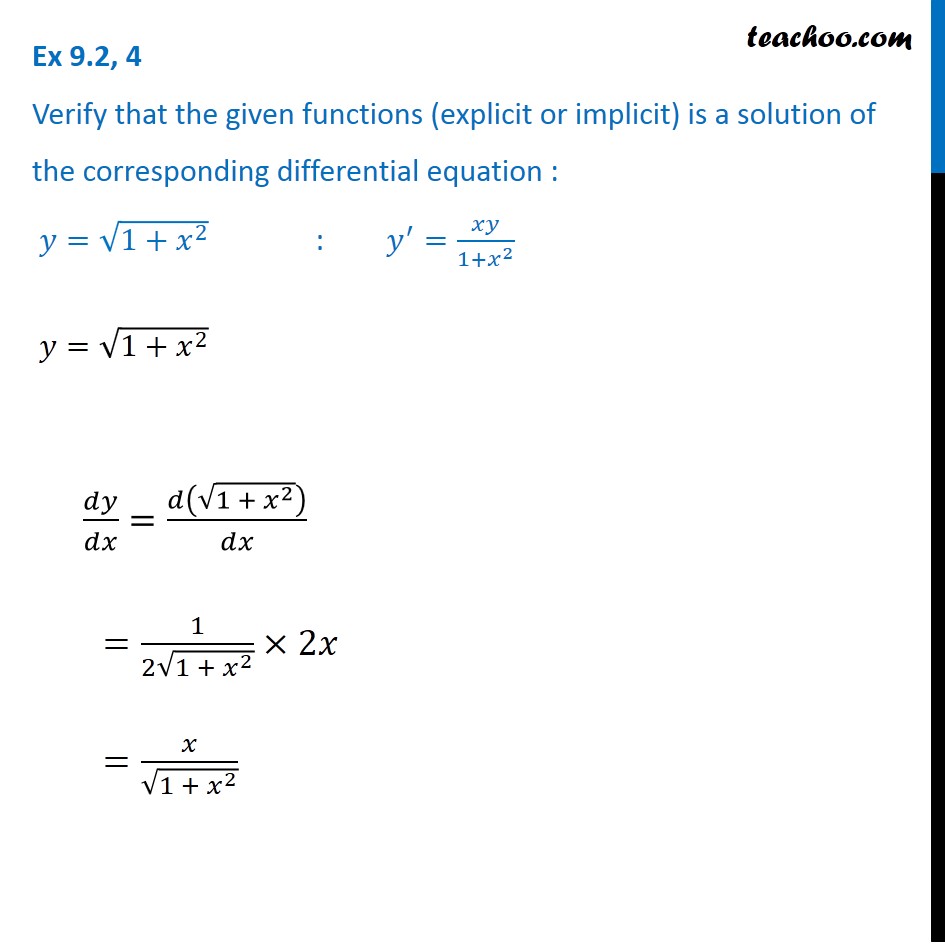


Ex 9 2 4 Verify Solution Y Root 1 X2 Y Xy 1 X2



The Graph Of The Equation X 2 Y 2 0 In The Three Dimensional Spa
Compute answers using Wolfram's breakthrough technology & knowledgebase, relied on by millions of students & professionals For math, science, nutrition, historySome Useful Algebra Formulas Just remembering Algebra (math) formulas are not going to help you to crack any examinations, one should have the ability to execute these formulas in the exam hall To do that, one has to practice the various types of algebraic math problems repeatedly Some Important Formulas of Algebra Square Formula 01You can put this solution on YOUR website!



Math 432 Hw 2 5 Solutions Pdf Free Download
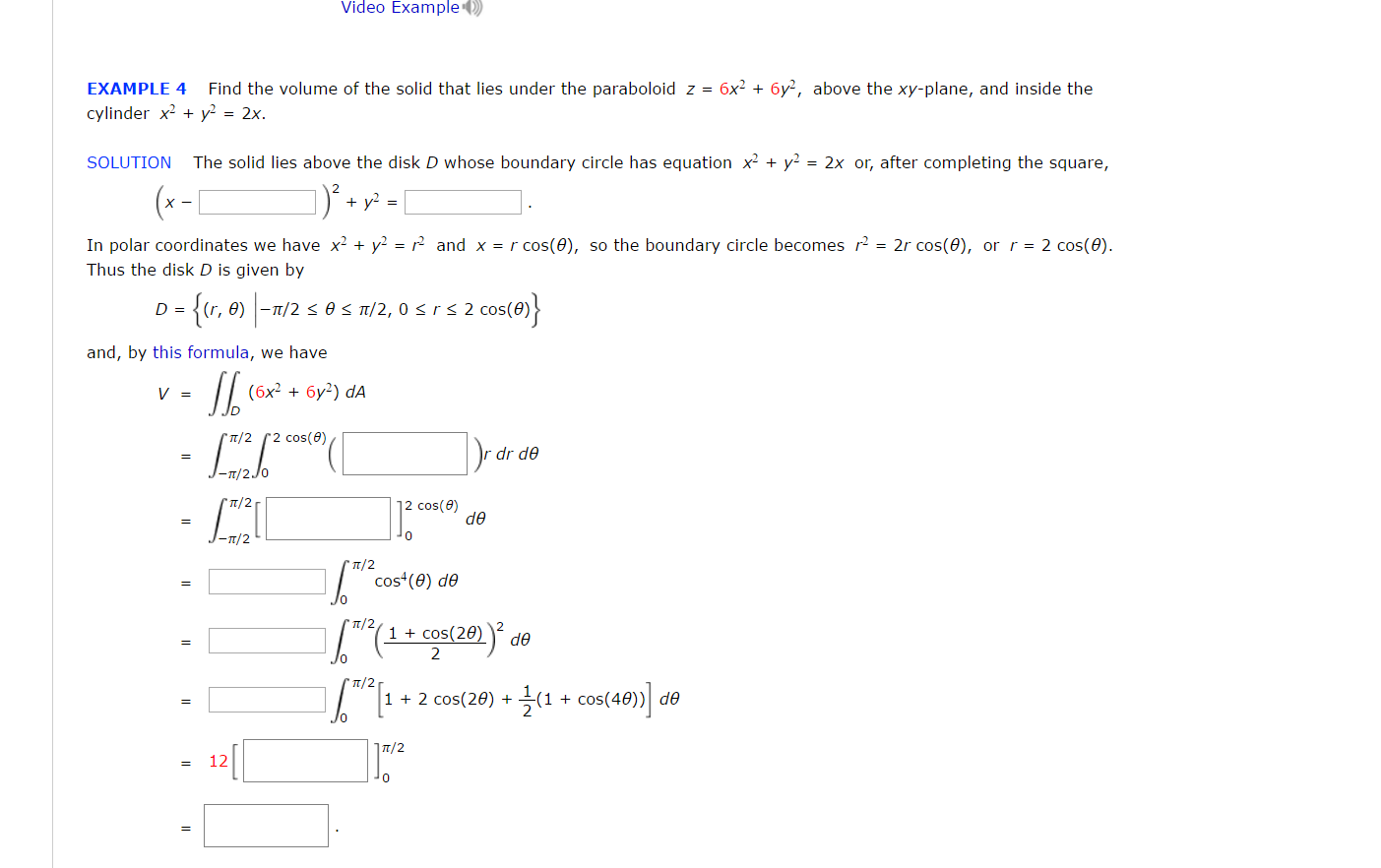


Solved Find The Volume Of The Solid That Lies Under The P Chegg Com
· In probability theory and statistics, variance is the expectation of the squared deviation of a random variable from its meanIn other words, it measures how far a set of numbers is spread out from their average value Variance has a central role in statistics, where some ideas that use it include descriptive statistics, statistical inference, hypothesis testing, goodness of fit, andExpand (x−y)(x2 xyy2) ( x y) ( x 2 x y y 2) by multiplying each term in the first expression by each term in the second expression Simplify terms Tap for more steps Simplify each term Tap for more steps Multiply x x by x 2 x 2 by adding the exponents Tap for more steps Multiply x x by x 2 x 2However, the figure resulting from removing six singular points is one Its name arises because it was discovered by Jakob Steiner when he was in Rome in 1844
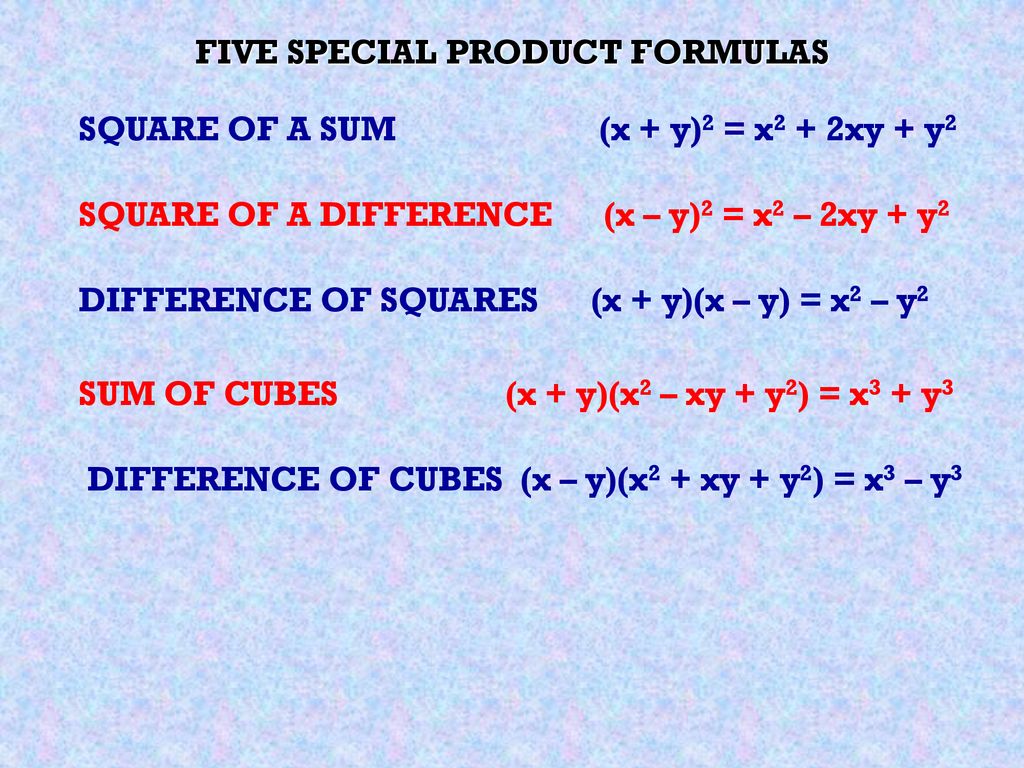


Factoring Sums And Differences Of Cubes Ppt Download



Factoring Two Variable Quadratics Rearranging Video Khan Academy
Algebra Divide (x^2y^2)/ (xy) x2 − y2 x − y x 2 y 2 x y Since both terms are perfect squares, factor using the difference of squares formula, a2 −b2 = (ab)(a−b) a 2 b 2 = ( a b) ( a b) where a = x a = x and b = y b = y (xy)(x −y) x−y ( x y) ( x y) x y Cancel the common factor of x−y x yCylindrical decomposition((x^2 x y y^2) 1> 0, {x, y}) tangent plane to (x^2 x y y^2) 1 at (x,y)=(1,2) SymmetricReduction((x^2 x y y^2) 1, {x^21, x}) (x^2 x y y^2) 1 > 0;The Roman surface or Steiner surface is a selfintersecting mapping of the real projective plane into threedimensional space, with an unusually high degree of symmetryThis mapping is not an immersion of the projective plane;
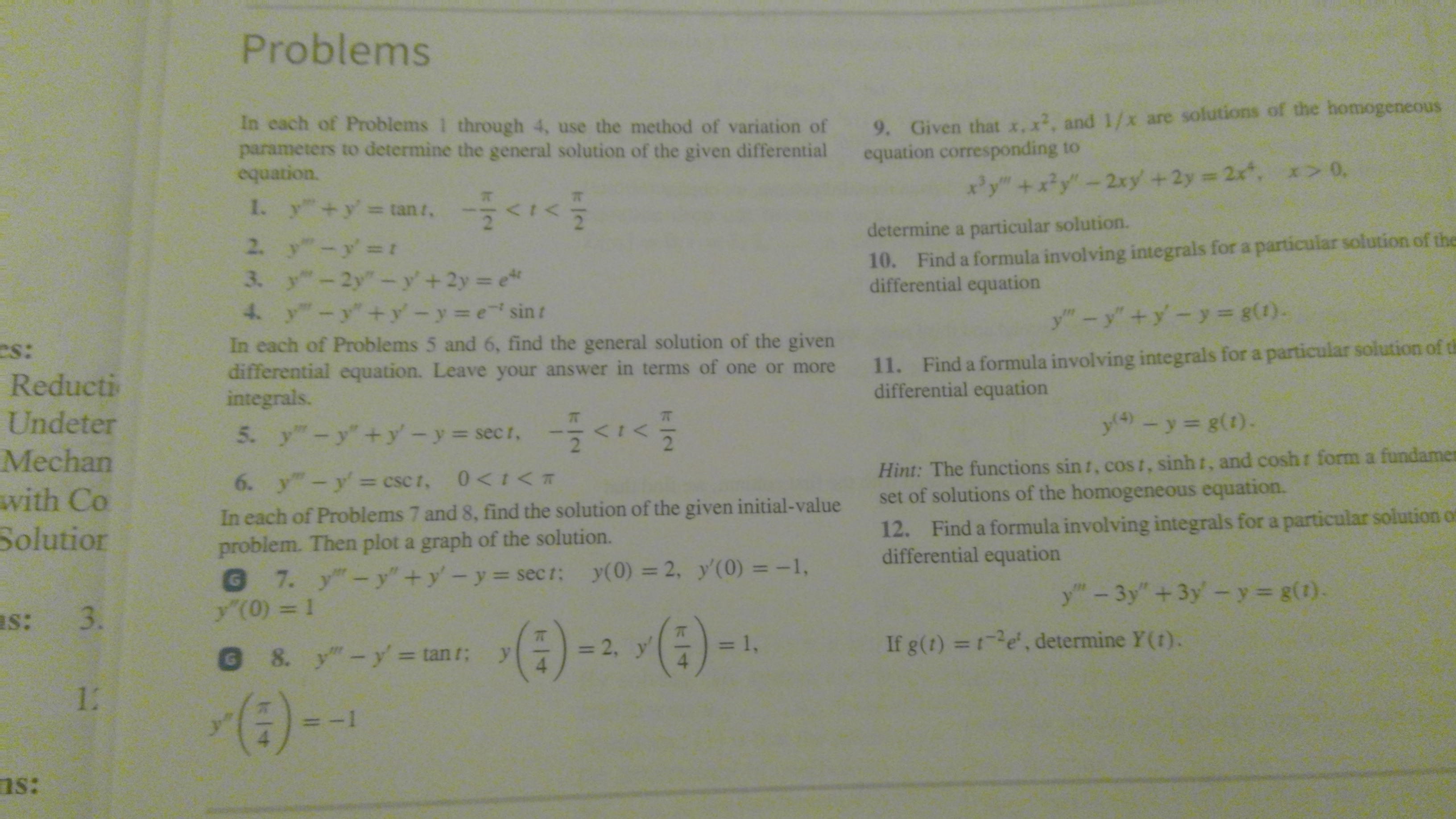


Answered Problems 9 Given That X X2 And 1 X Bartleby
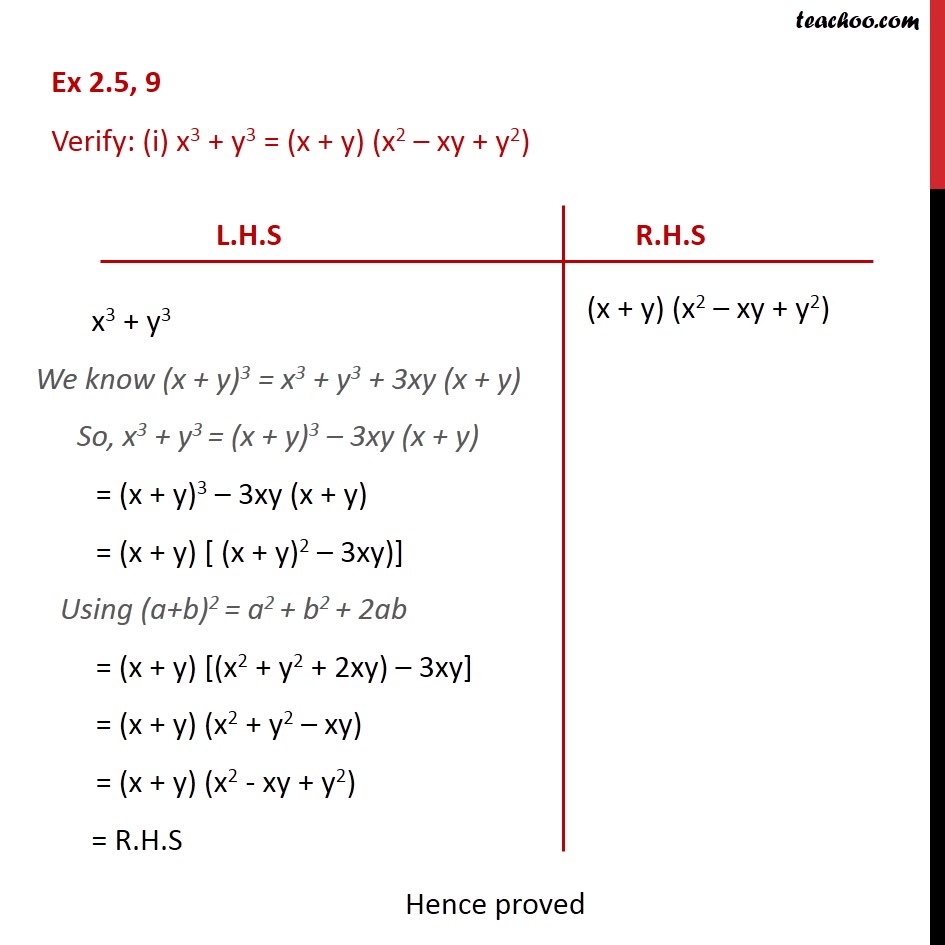


Ex 2 5 9 Verify I X3 Y3 X Y X2 Xy Y2 Ex 2 5
X 2 d x − y 2 d x x d y 2 = 0 d x x d y 2 − y 2 d x x 2 = 0 d x d ( y 2 x) = 0 x y 2 x = C It seems to me that there is a sign mistake somewhere Share edited Nov 11 ' at 2301 answered Nov 11 ' at 2256 AryadevaCircle on a Graph Let us put a circle of radius 5 on a graph Now let's work out exactly where all the points are We make a rightangled triangle And then use Pythagoras x 2 y 2 = 5 2 There are an infinite number of those points, here are some examples · In mathematics, trigonometric substitution is the substitution of trigonometric functions for other expressions In calculus, trigonometric substitution is a technique for evaluating integralsMoreover, one may use the trigonometric identities to simplify certain integrals containing radical expressions Like other methods of integration by substitution, when evaluating a definite



How To Solve The Ordinary Differential Equation X 2 Y 2 X Y 2y X 4 Mathrm E X Mathematics Stack Exchange



Find The Product X Y Z X 2 Y 2 Z 2 Xy Yz Zx Youtube
The example below demonstrates how the Quadratic Formula is sometimes used to help in solving, and shows how involved your computations might get Solve the system x 2 – xy y 2 = 21 x 2 2xy – 8y 2 = 0 This system represents an ellipse and a set of straight linesCompute answers using Wolfram's breakthrough technology & knowledgebase, relied on by millions of students & professionals For math, science, nutrition, historyI'll use the following formulas #color(blue)(x^2 y^2 = (xy)(xy))# #color(purple)(x^3 y^3 = (xy)(x^2 xy y^2))# #color(green)((xy)^2 = x^2 2xy y^2)#
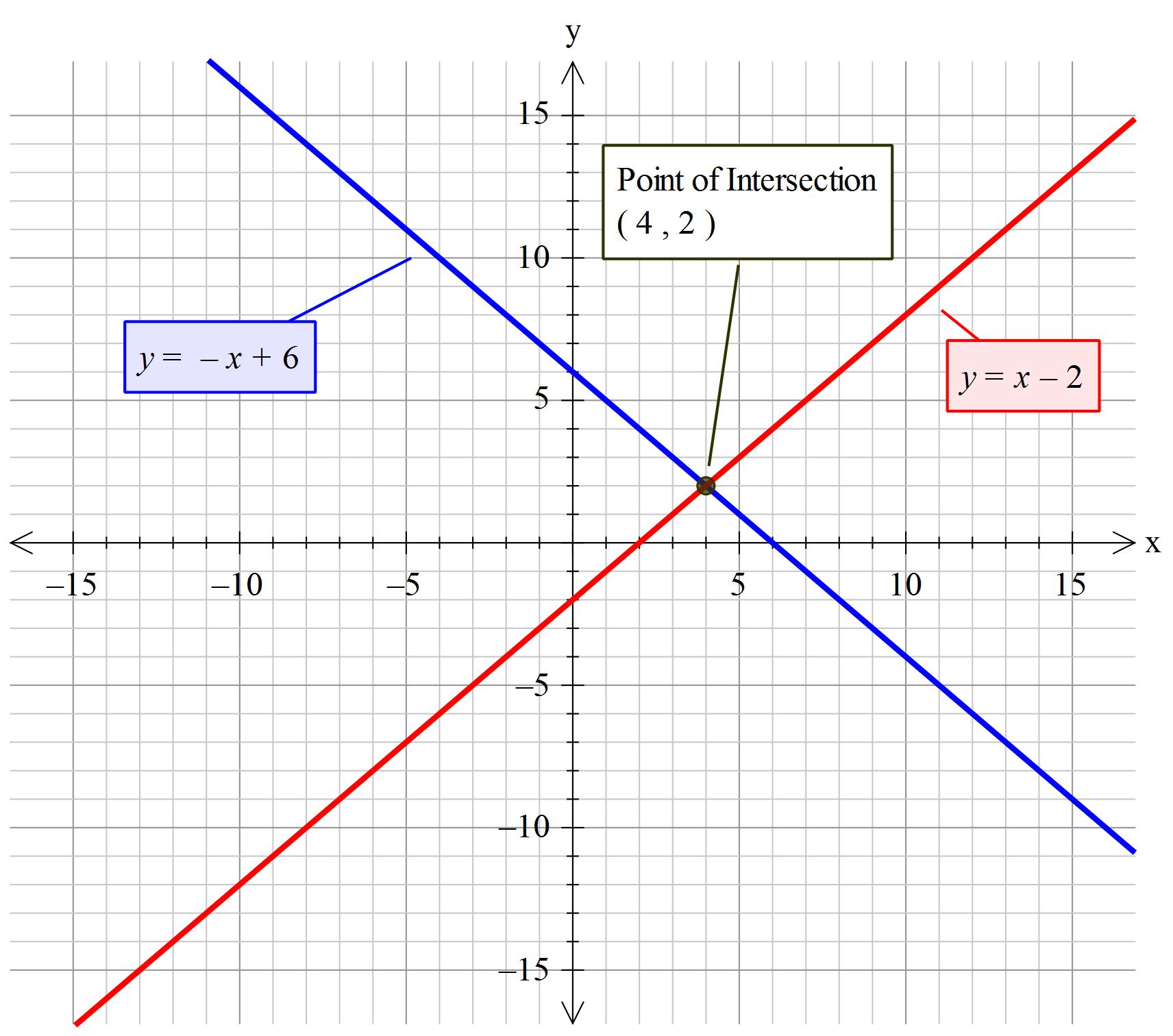


How Do You Solve The System X Y 6 And X Y 2 By Graphing Socratic



Formulas Area Litre
2310 · If x^2 xy y^3 = 1, find the value of y" at the point where x = 1 Video Transcript in this problem were given any question west by about enough for derivative on exit onAlgebra Factor x^2y^2 x2 − y2 x 2 y 2 Since both terms are perfect squares, factor using the difference of squares formula, a2 −b2 = (ab)(a−b) a 2 b 2 = ( a b) ( aCompute answers using Wolfram's breakthrough technology & knowledgebase, relied on by millions of students & professionals For math, science



Implicit Differentiation Advanced Example Video Khan Academy
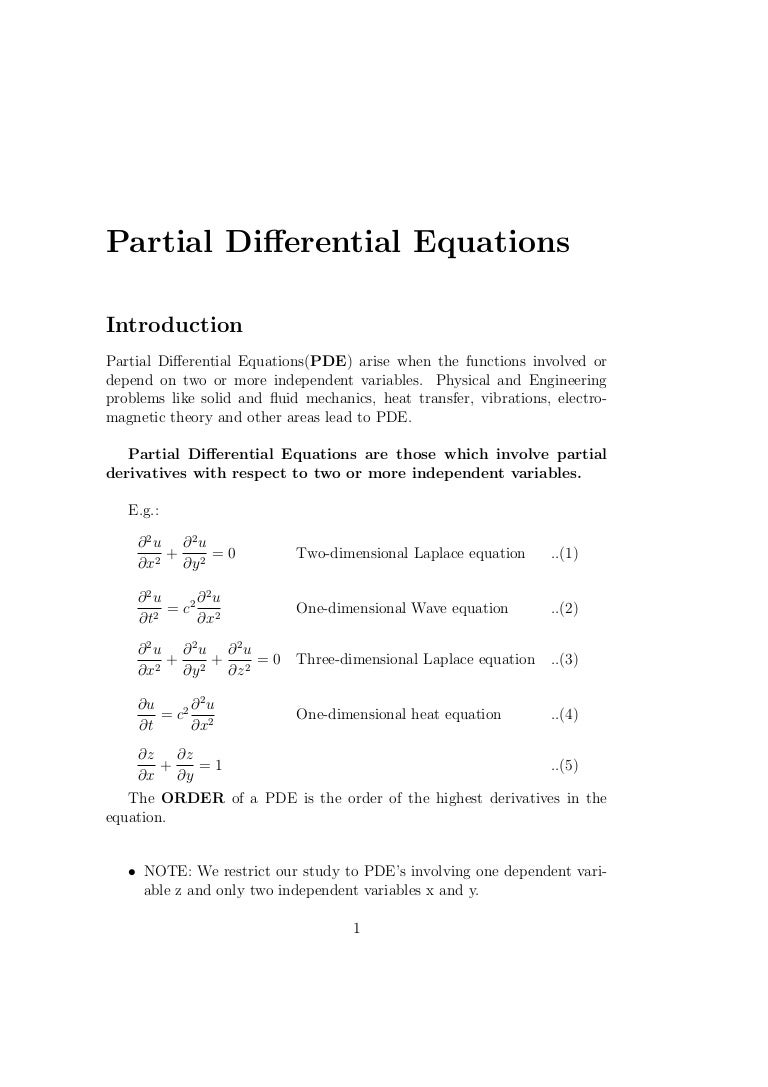


Partial Differential Equation Notes
Since y^2 = x − 2 is a relation (has more than 1 yvalue for each xvalue) and not a function (which has a maximum of 1 yvalue for each xvalue), we need to split it into 2 separate functions and graph them together So the first one will be y 1 = √ (x − 2) and the second one is y 2 = −√ (x − 2)The Gaussian integral, also known as the Euler–Poisson integral, is the integral of the Gaussian function = over the entire real line Named after the German mathematician Carl Friedrich Gauss, the integral is = Abraham de Moivre originally discovered this type of integral in 1733, while Gauss published the precise integral in 1809 The integral has a wide range of applications · I'm not very good at implicit differentiation could someone please help me out I need to differentiate x^2xyy^2=3 using implicit differentiation if someone could explain the steps I would be very greatful



Factorise 2x 2 Y 2 8z 2 2 2xy 4 2yz 8xz Brainly In
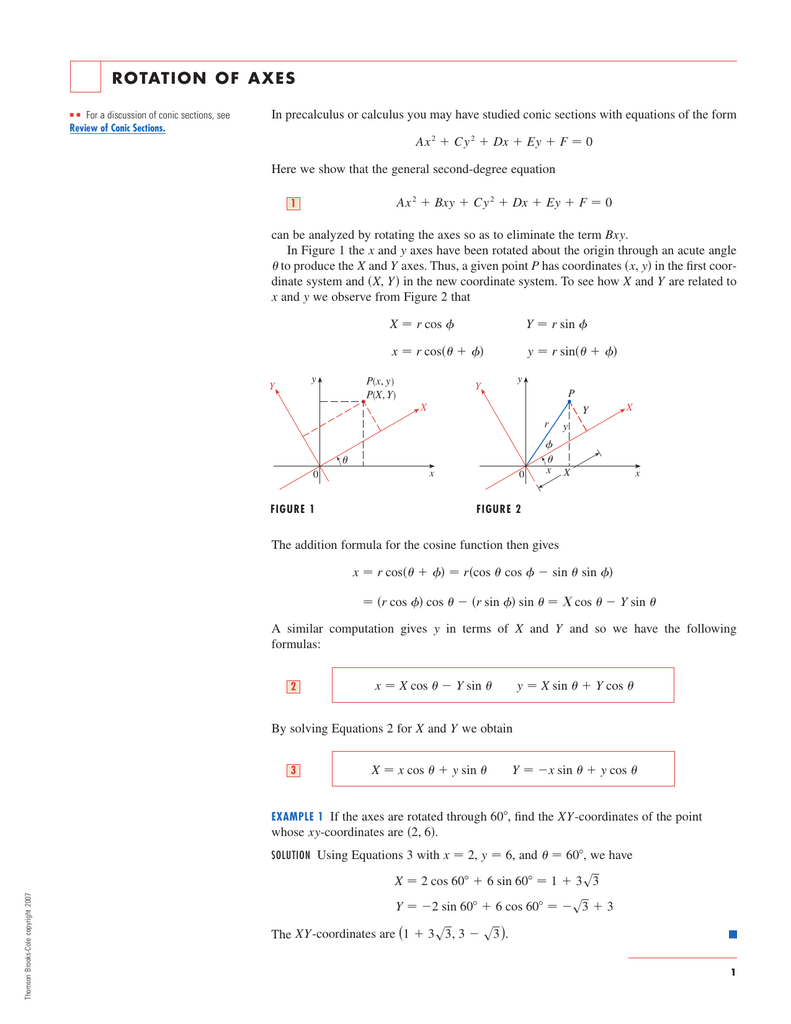


Rotation Of Axes Stewart Calculus
Manipulate c in (x^2 x y y^2) 1 = cThis equation is in standard form a x 2 b x c = 0 Substitute 1 for a, − 2 x for b, and x 2 for c in the quadratic formula, 2 a − b ± b 2 − 4 a c y=\frac {\left (2x\right)±\sqrt {\left (2x\right)^ {2}4x^ {2}}} {2} y = 2 − ( − 2 x) ± ( − 2 x) 2 − 4 x 2 Square 2x Square − 2 x12 x 2 2xy y 2 is a perfect square It factors into (xy)•(xy) which is another way of writing (xy) 2 How to recognize a perfect square trinomial • It has three terms • Two of its terms are perfect squares themselves • The remaining term is twice the product of the square roots of the other two terms Final result (x y) 2



The Solution Of The Differential Equation Y Xy 2x 2y 2 Dx X Xy X 2y 2 Dy 0 Is Given Youtube
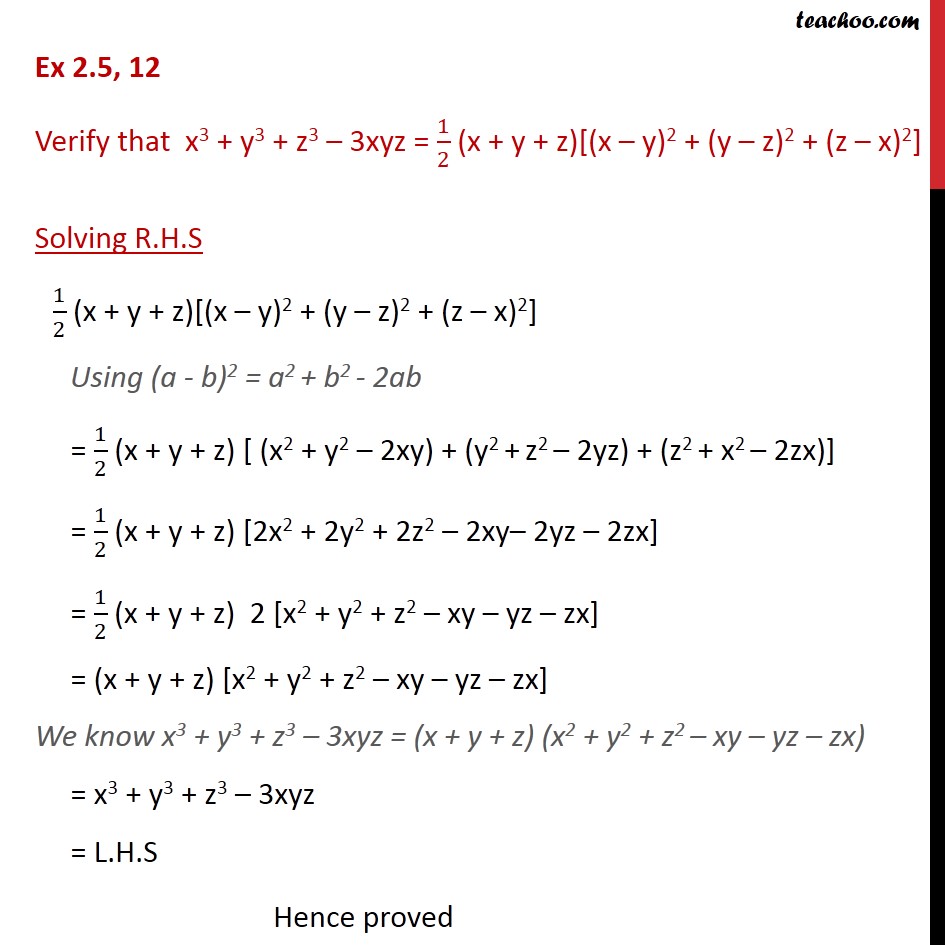


Ex 2 5 12 Verify That X3 Y3 Z3 3xyz 1 2 Ex 2 5
When we have a sum (difference) of two or three numbers to power of 2 or 3 and we need to remove the brackets we use polynomial identities (short multiplication formulas) (x y) 2 = x 2 2xy y 2 (x y) 2 = x 2 2xy y 2 Example 1 If x = 10, y = 5a//googl/JQ8NysPartial Derivative of f(x, y) = xy/(x^2 y^2) with Quotient RuleObserving , it's obvious that x and y MUST be 3 and 4 Likewise x and y MUST be 3 and 4 as xy = 12 Proving this, we get> , which becomes 25 2(12) = 25 24 = 49 Since , then x y = 7 Square root of each side was taken I don't know what means but you should be able to



Factorise X Square 2xy Y Square 1 Brainly In


Grade 9 Math Quadratic Equations The Following Are Simultaneous Quadratic Equations I Ve Been Looking For A General Way For Solving Them But My Textbook Provides No Context And The Internet Hasn T Been



Misc 7 Show That General Solution Is X Y 1 A 1 X Y 2xy



Tangent Plane To X 2 Xy Y 2 Z 0 Youtube



Solution The Equation Y 2 Cx Is General Solution Of
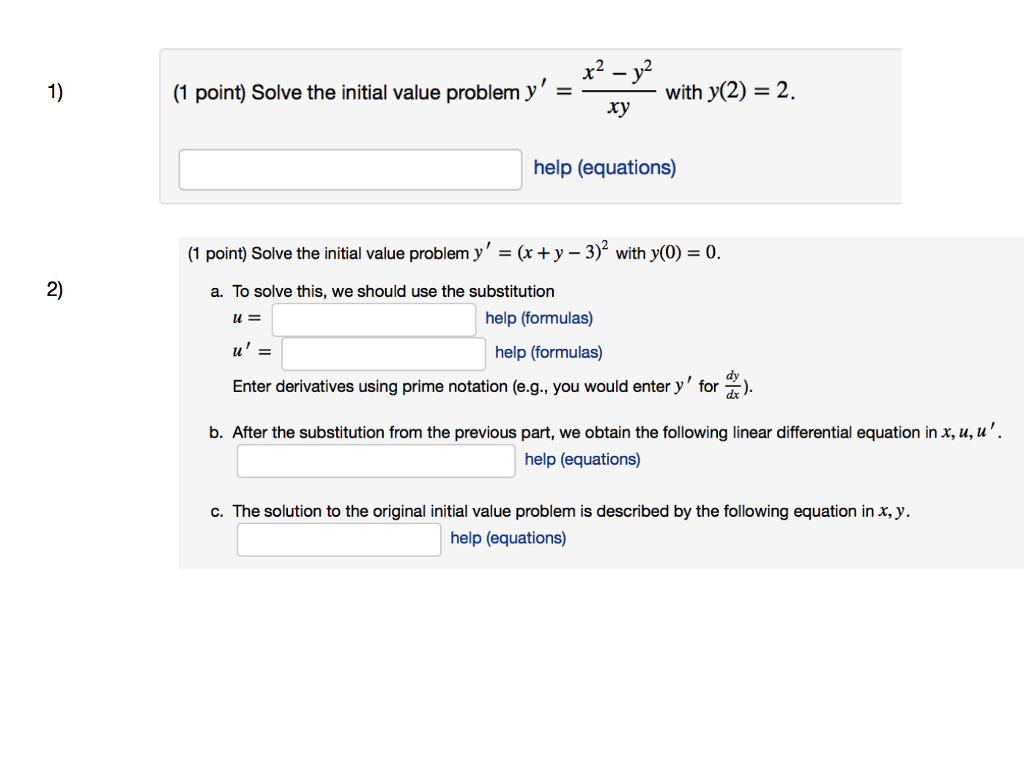


Solved X2 Y2 1 1 Point Solve The Initial Value Problem Chegg Com



Solve The Differential Equation X 2 Y 2 Dx 2xydy 0 Youtube
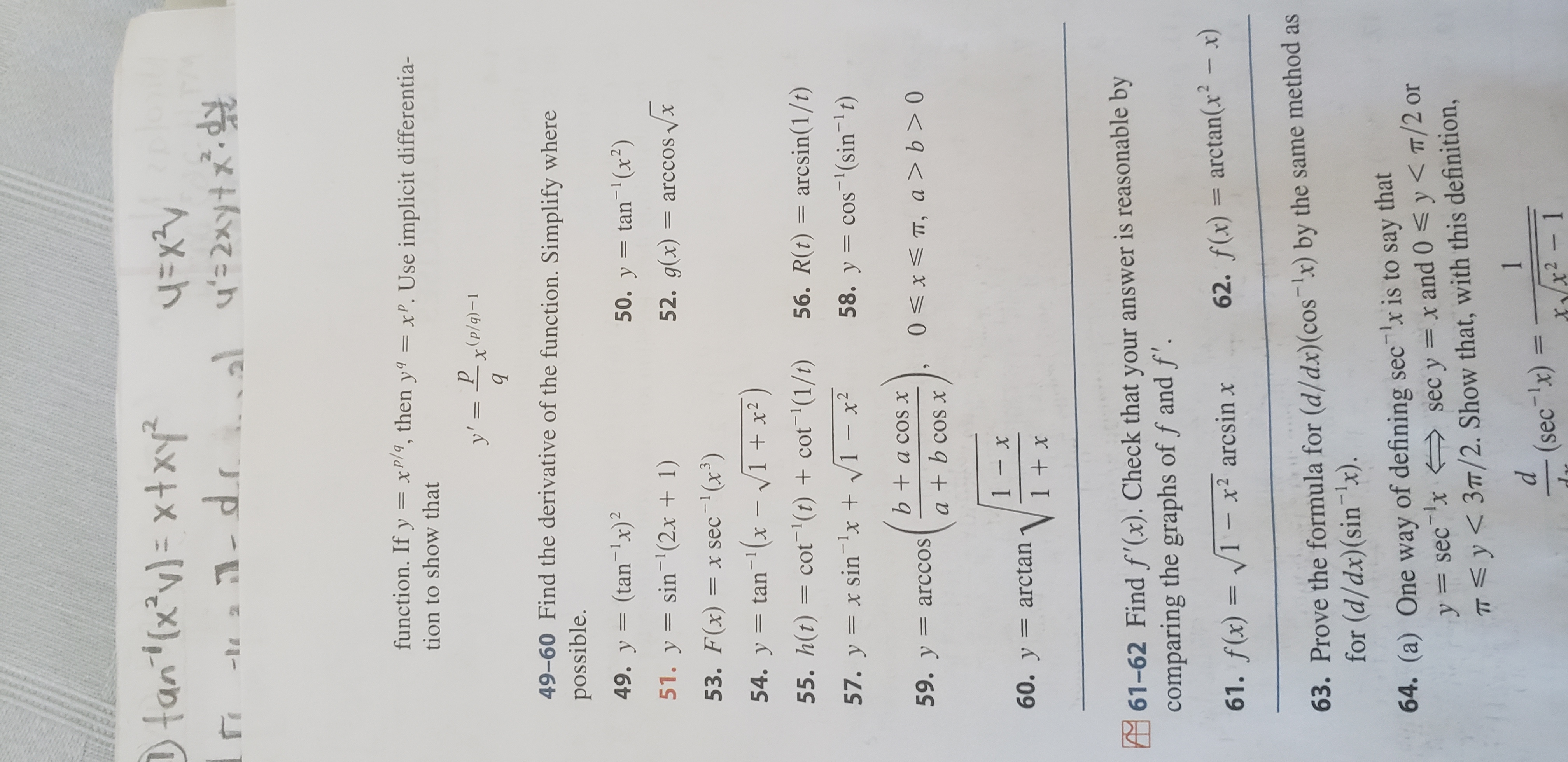


Answered Dtant X V X Xy 4 Xv Al 4 2xytx 4 Bartleby



Solving The Bernoulli Differential Equation X 2 Dy Dx Y 2 Xy Youtube



Math 432 Hw 2 5 Solutions Pdf Free Download
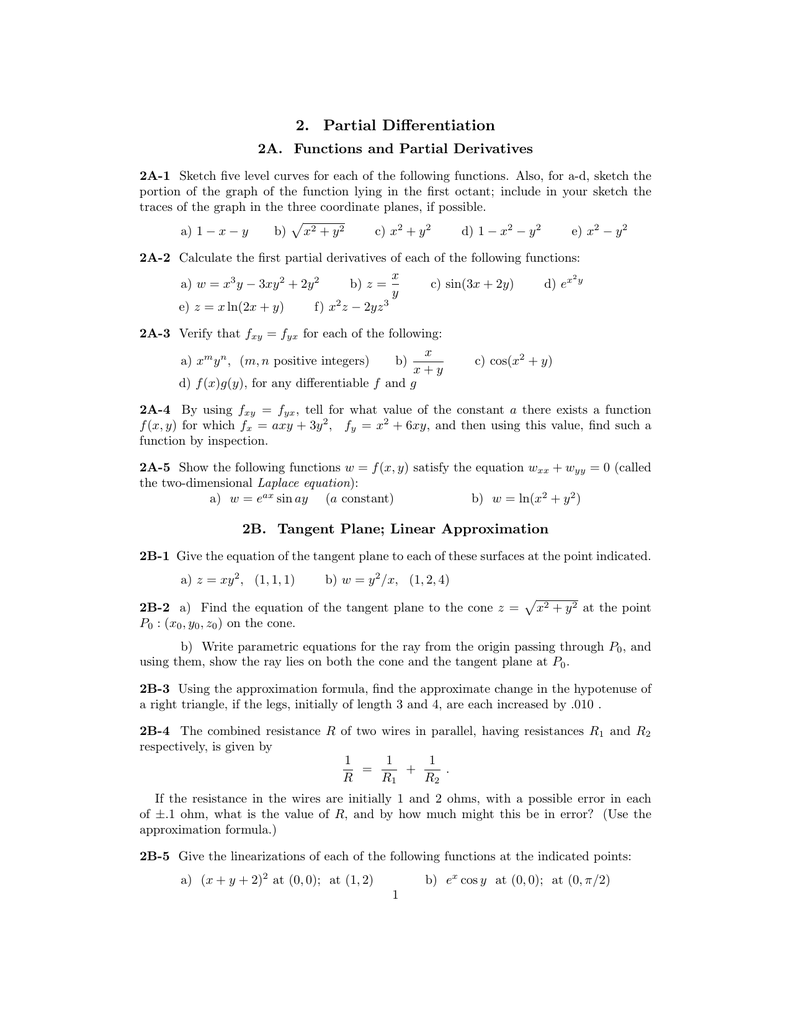


2 Partial Differentiation



Solve The Linear Differential Equation X 2 1 Dy Dx Xy X Youtube



Multiply X 2 4y 2 2xy 3x 6y 9 By X 2y 3



Math 432 Hw 2 5 Solutions Pdf Free Download



Homogeneous Differential Equation Y 2 Yx Dx X 2dy 0 Youtube



Section Cmz Part Imathemat Section 1 Single Correct Answer Type Total Marks 30 Tiple Choice Questions



Factorise X Square 2xy Y Square Z Square Brainly In



Z X 2 Y 2 Page 1 Line 17qq Com
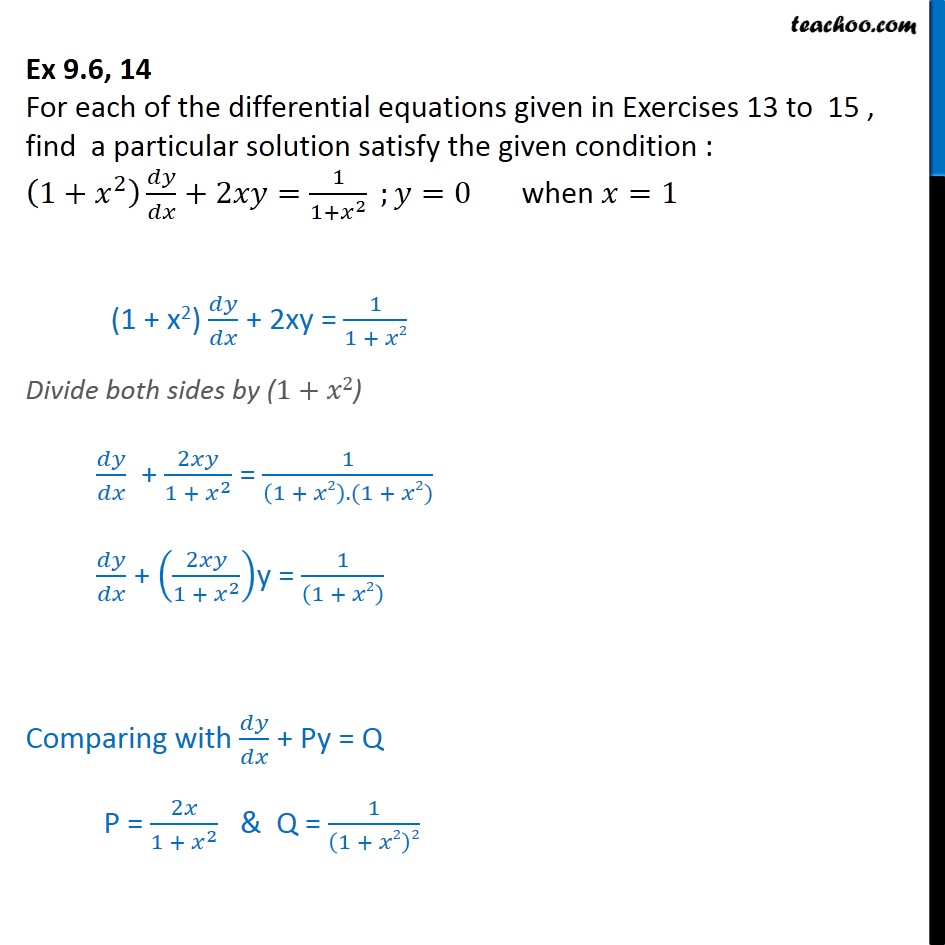


Ex 9 6 14 Find Particular Solution 1 X2 Dy Dx 2xy
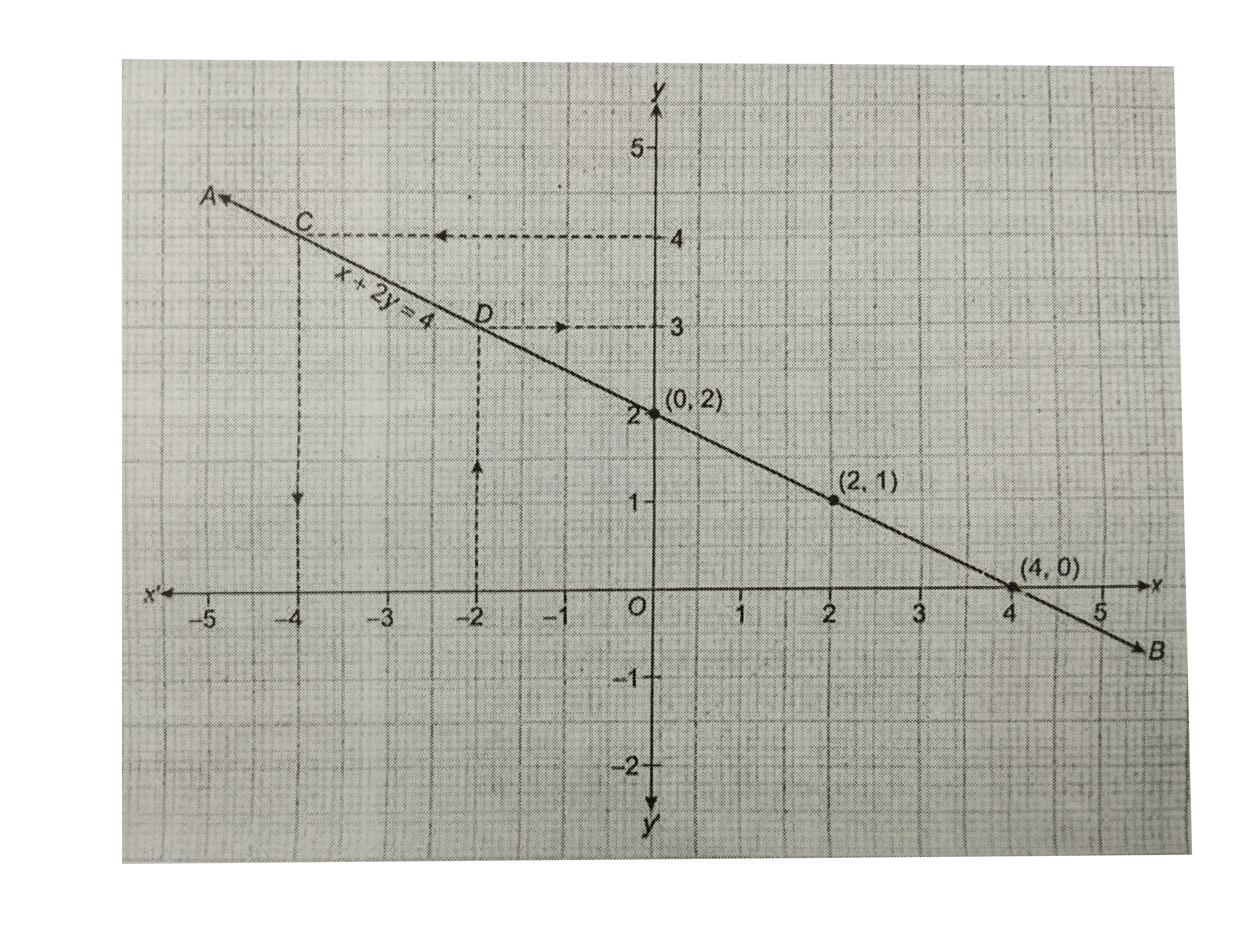


Draw The Graph Of The Equation X 2y 4 Use Graph To Find Br



Ipe Material Notes
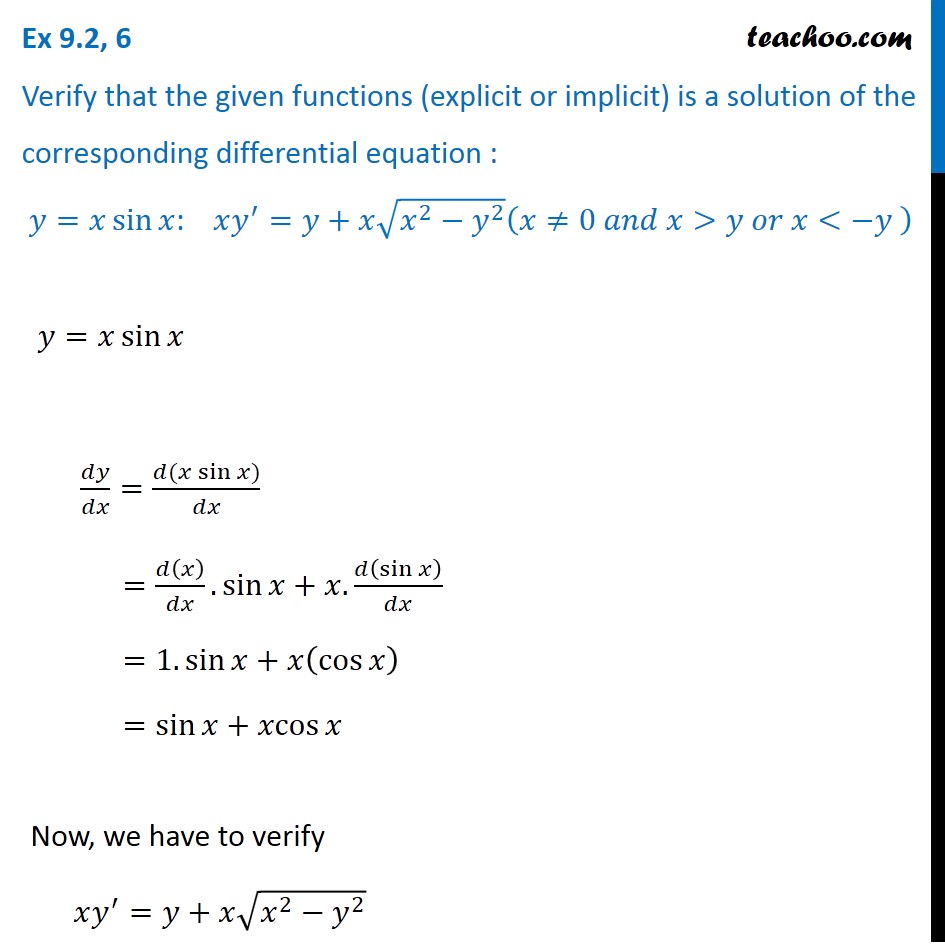


Ex 9 2 6 Verify Y X Sin X Xy Y X Root X2 Y2



Solve X 2y Xy 36y 0 Cauchy Euler Differential Equation Example Youtube



Power Series Solution To Y 2xy 0 Mathematics Stack Exchange
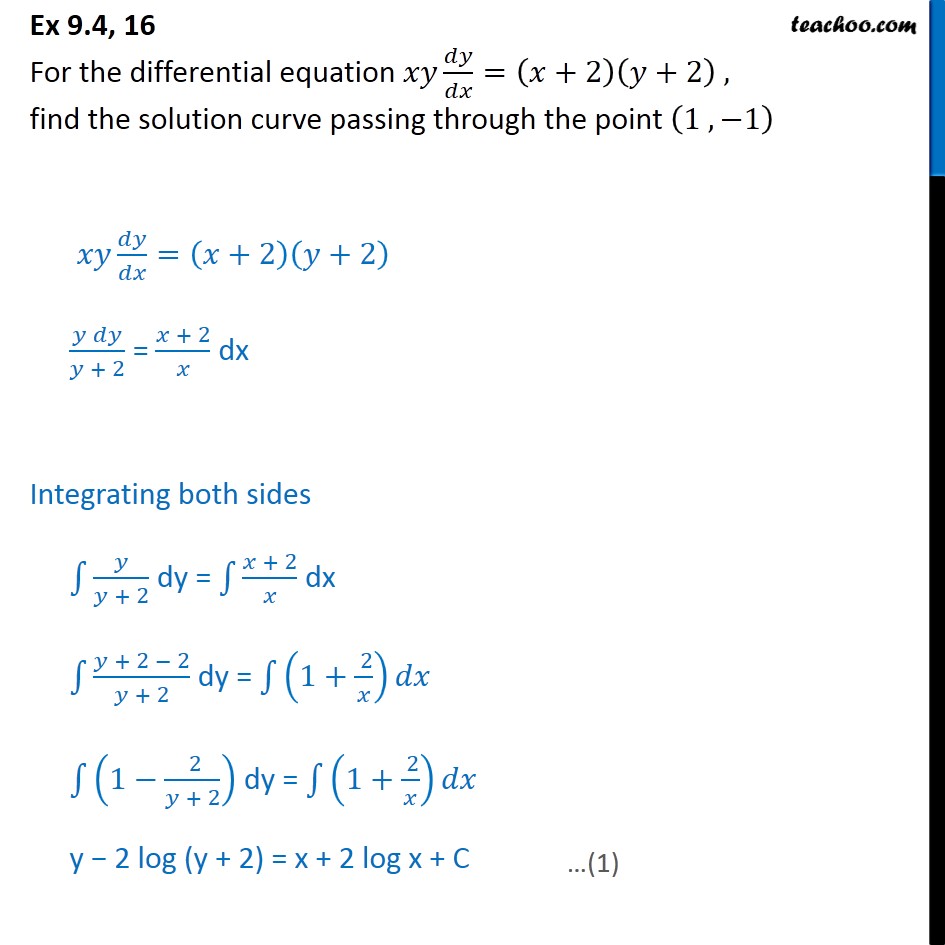


Ex 9 4 16 For Xy Dy Dx X 2 Y 2 Find Solution



Factorise X 2 2xy Y 2 4z 2 Factorise X2 2xy Y2 4z2 Youtube



Q 1 Prove That 2x 3 2y 3 2z 3 6xyz X Y Z Formula X Y 2 Y Z 2 Z X 2 Maths Polynomials Meritnation Com
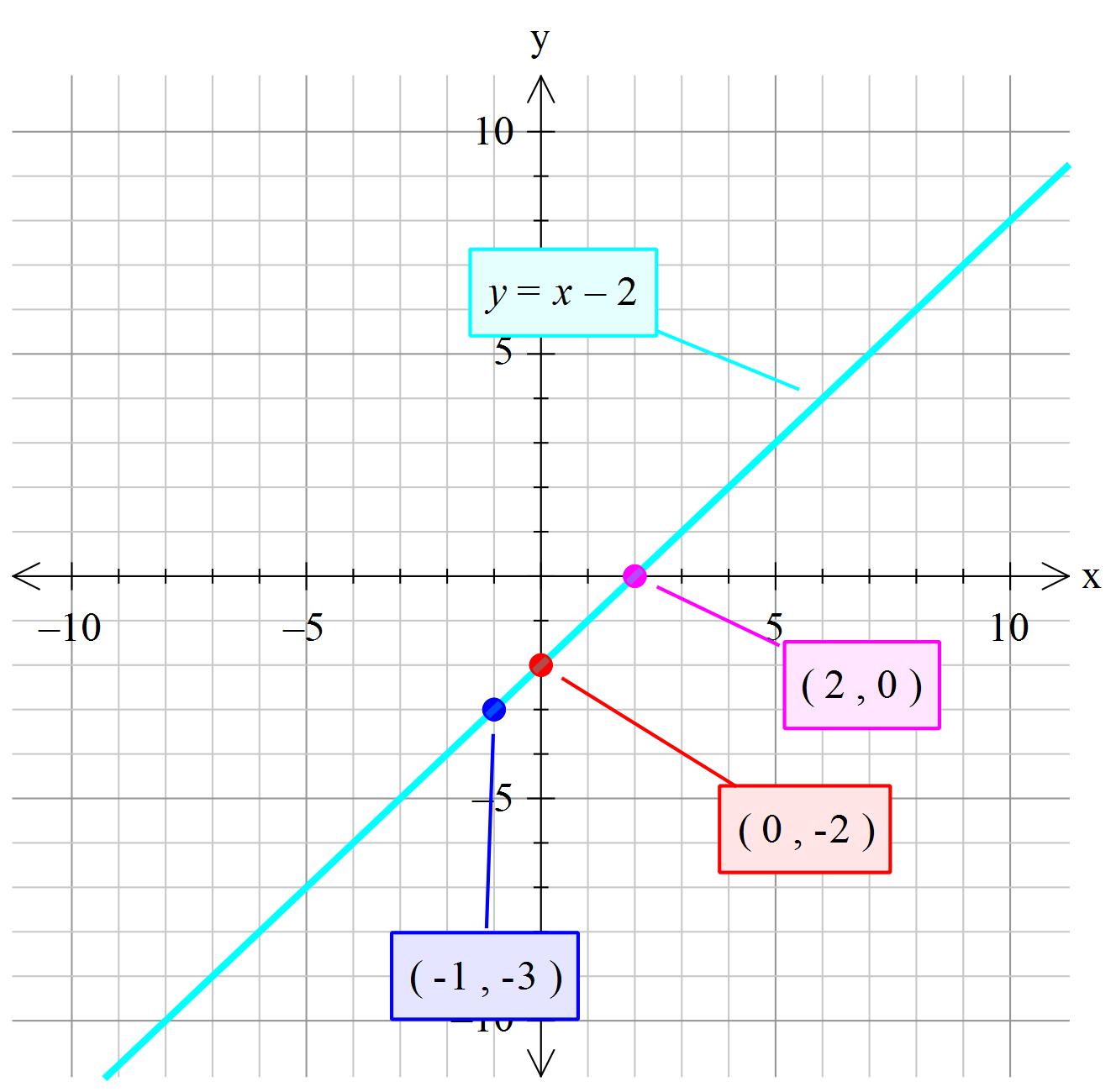


How Do You Graph The Line X Y 2 Socratic



Pin On English Vocabulary



Simplify X 2 Y 2 3 Y 2 Z 2 3 Z 2 X 2 3 X Y 3 Y Z 3 Z X 3 Brainly In



Show That Z Ln X 2 Y 2 2 Tan 1 Y X Satisfies The Laplaces S Equation Mathematics Stack Exchange
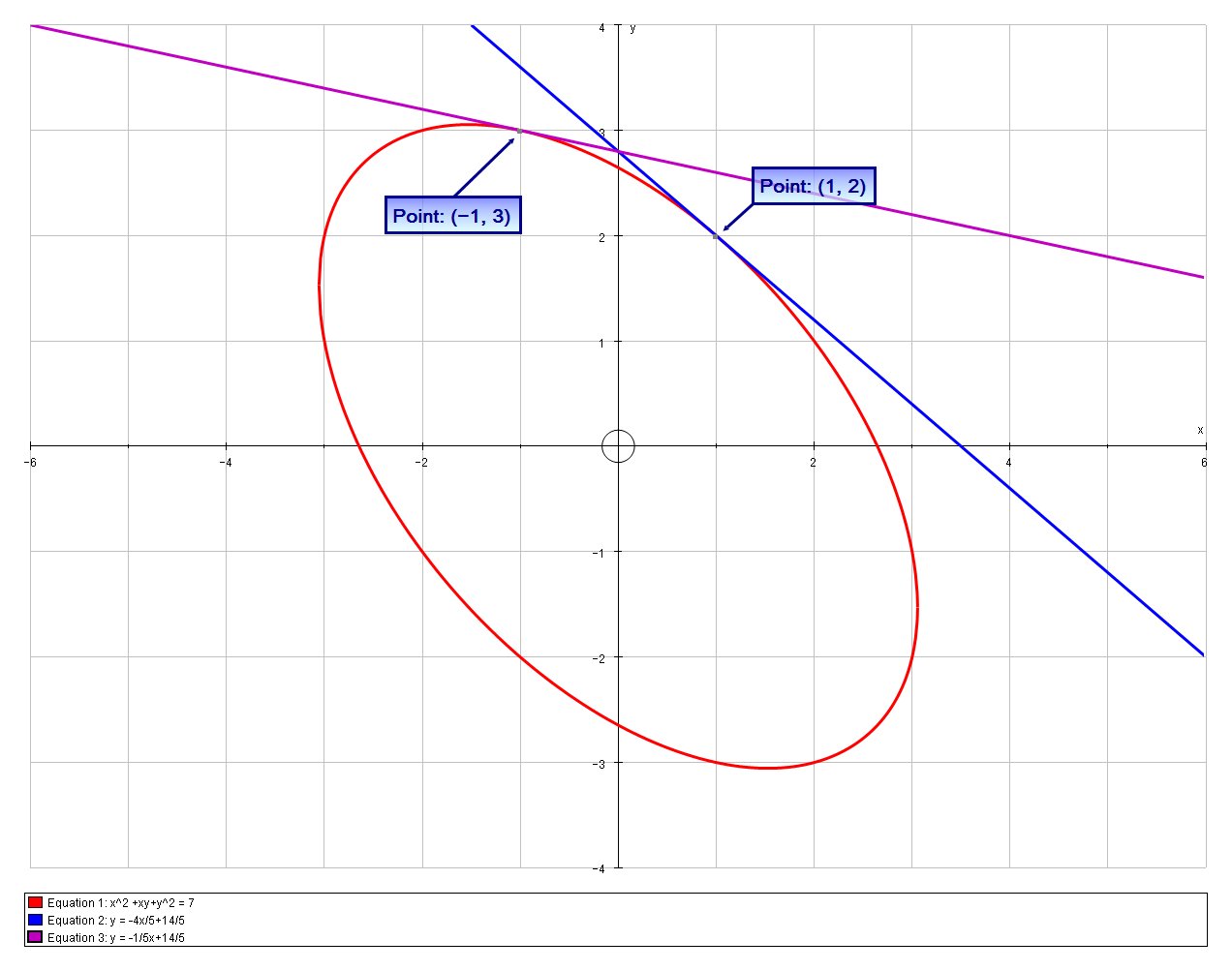


How Do You Find The Slope Of The Line Tangent To X 2 Xy Y 2 7 At 1 2 And 1 3 Socratic



Show That The Lines X 2 4xy Y 2 0 And X Y 1 Form An Equilateral Triangle And Find Its Area
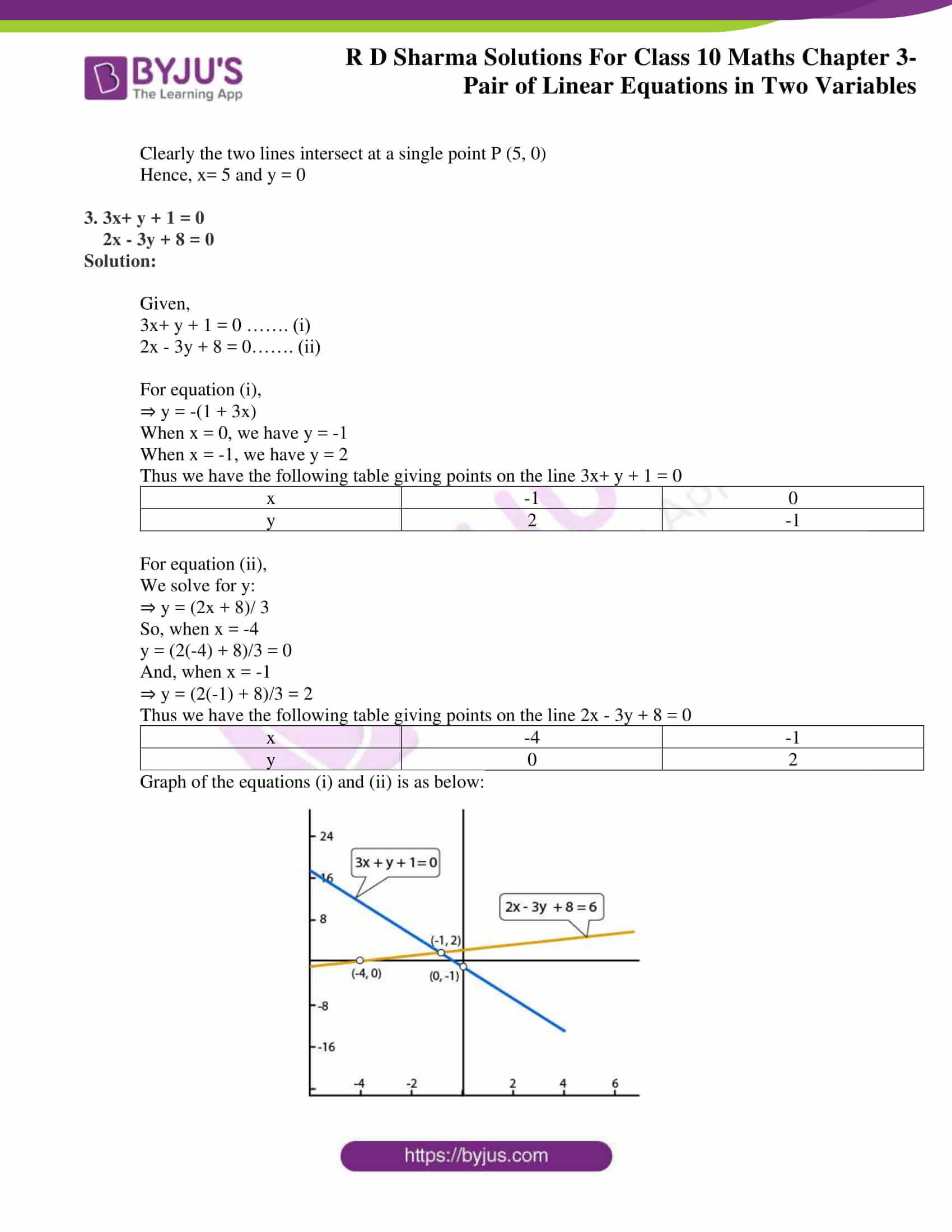


Rd Sharma Class 10 Solutions Maths Chapter 3 Pair Of Linear Equations In Two Variables Exercise 3 2



How Do I Prove That X 2 Y 2 X Y 2 2xy Geometrically Intuitively Mathematics Stack Exchange



Find Y X If It Satisfies The Following Differential Equation



Math 432 Hw 2 5 Solutions Pdf Free Download



Find The Separate Equation Of The Lines Represented By The Followi



Angle Between The Lines Represented By The Equation X 2 2xysec Theta Y 2 0 Is Ltbr Gt A Youtube



Solve The Differential Equation X Y 2 X Dx Y X 2 Y



11 B X 3 C X D X The L Cm Of X



Solved 1 Point Let I S 2 X2 Y2 Dx Dy Where D Chegg Com



Polynomial Solution Of The Equation 1 X 2 Y 2xy 6y 0 Mathematics Stack Exchange
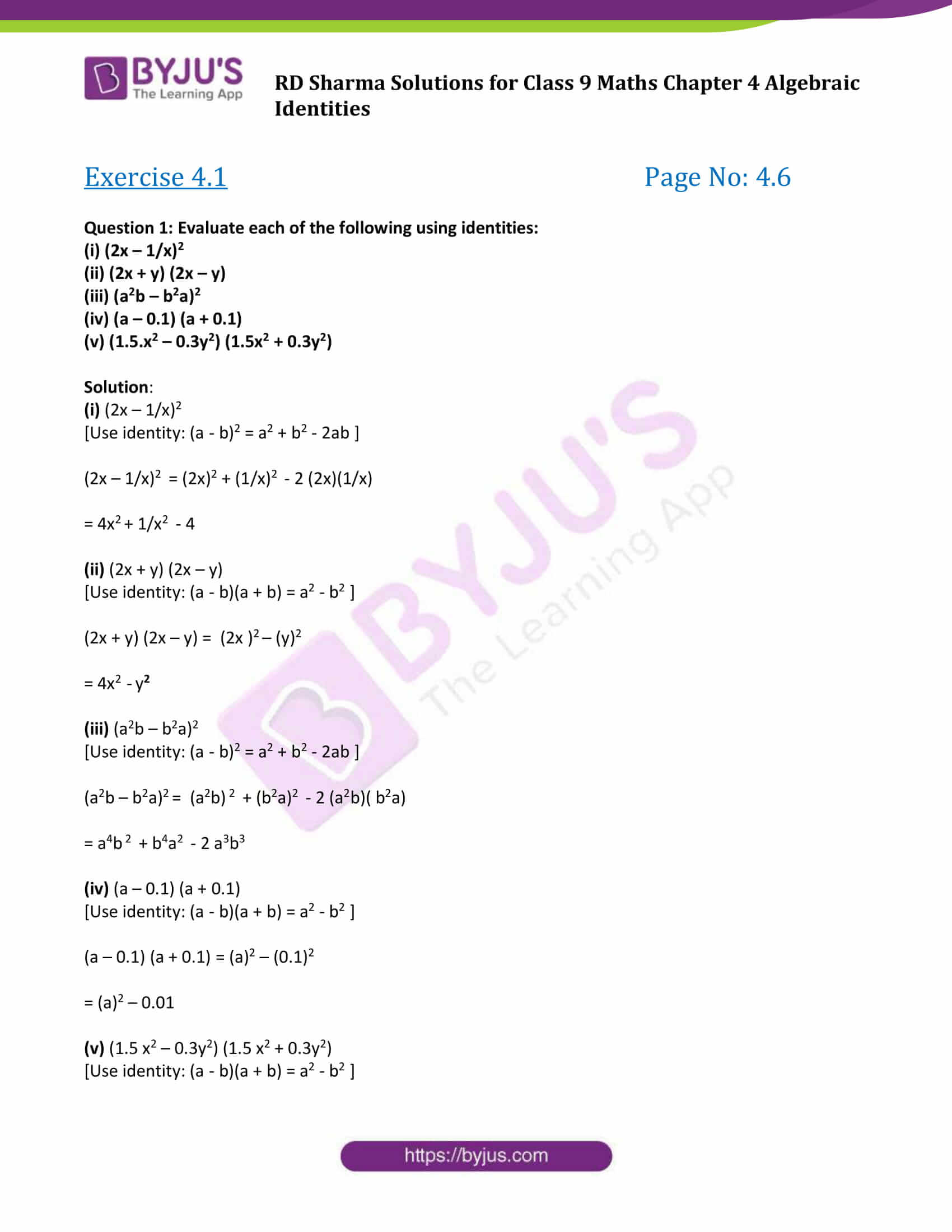


Rd Sharma Class 9 Chapter 4 Algebraic Identities Free Pdf



Solve The Equation X 2 3xy Y 2 Dx X 2dy 0 Given That Y 0 And X 1



Systems Of Equations With Substitution 9x 3y 15 Y X 5 Video Khan Academy



If X 2 2x Y Y 3 42 Find Dy Dx



Math 432 Hw 2 5 Solutions Pdf Free Download



How To Solve A Differential Equation With Series X 1 Y Xy Y 0 With Y 0 2 Y 0 6 Youtube



Formula



X3 Y3 Z3 3xyz X Y Z X2 Y2 Z2 Xy Yz Zx Proof It Lhs To Rhs Brainly In



The Solution Of The Equation X Y 2 And X Y 4 Is Brainly In



Verify X3 Y3 And X3 Y3 Std 9 Maths Ex 2 5 Q 9 Youtube
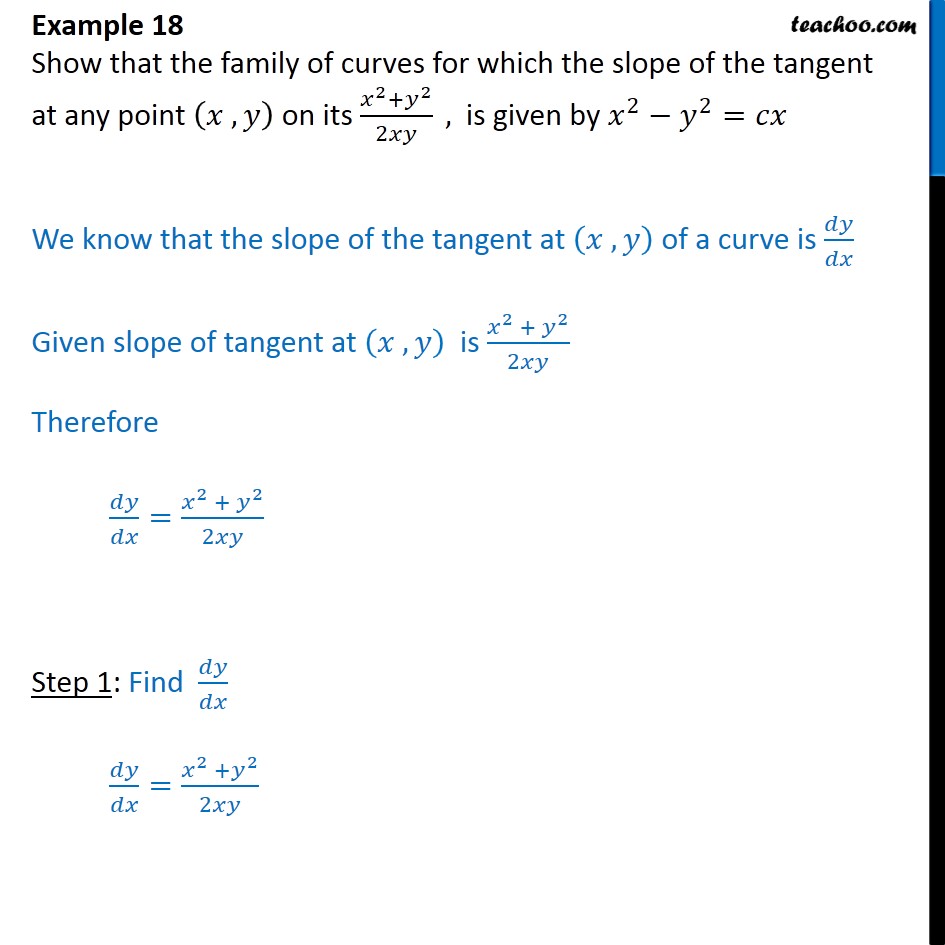


Example 18 Show Curves Slope Of Tangent Is X2 Y2 2xy



Quadratic Function Wikipedia
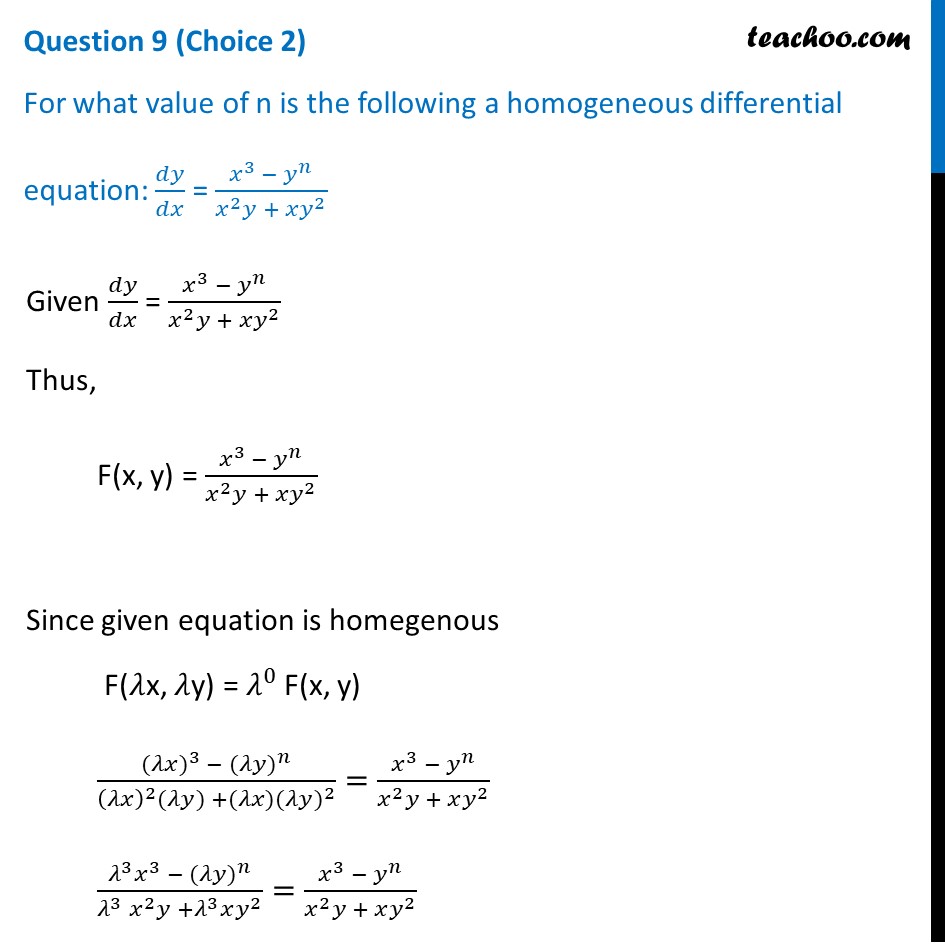


For What Value Of N Is Following A Homogeneous Differential Equation



The Solution Of Dy Dx X 2 Y 2 1 2xy Satisfying Y 1 0 Is
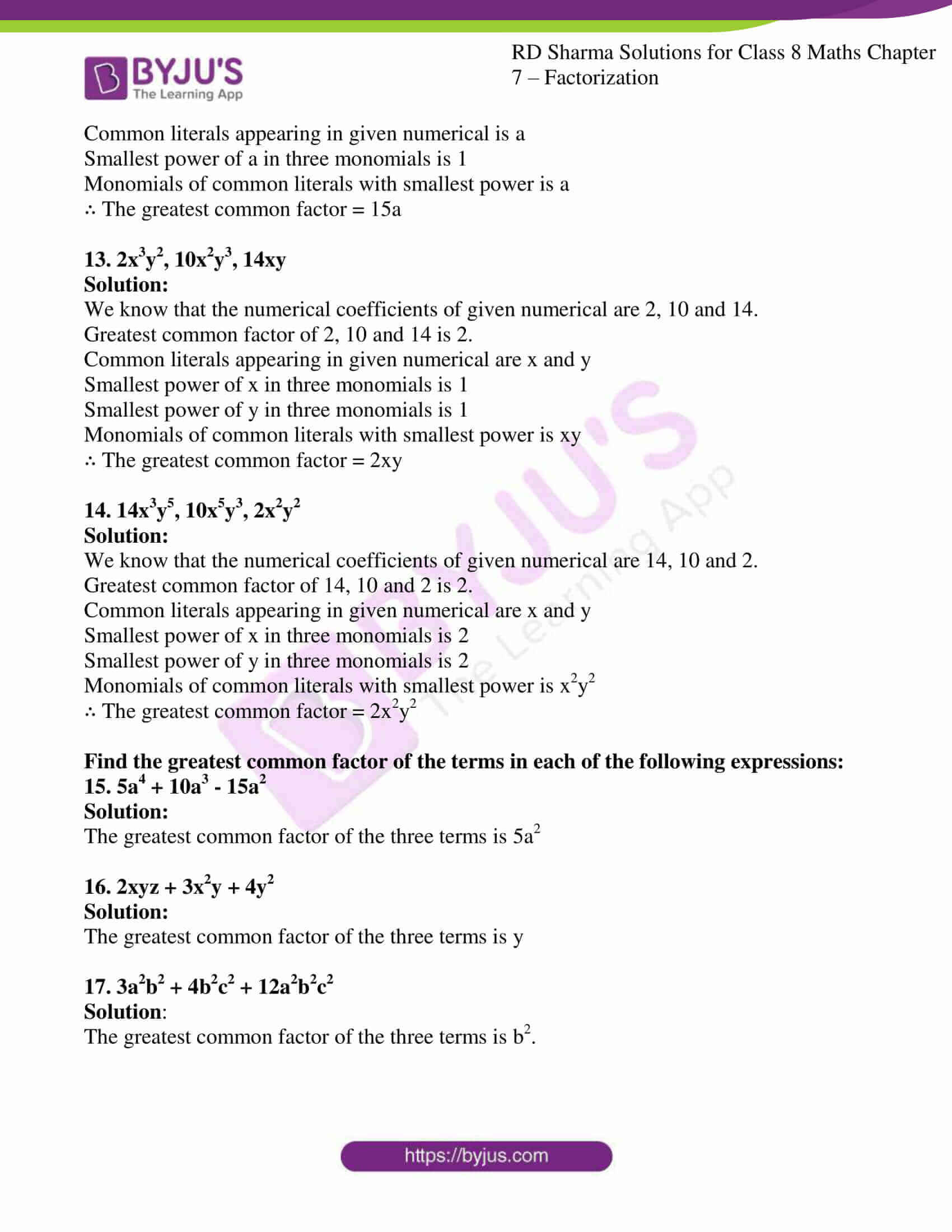


Rd Sharma Solutions For Class 8 Chapter 7 Factorization Download Free Pdf



Solve The Following Equation Simultaneously X Y 3 X 2 Y 2 29 Brainly In



Ex 9 3 2 Form Differential Equation Y2 A B2 X2
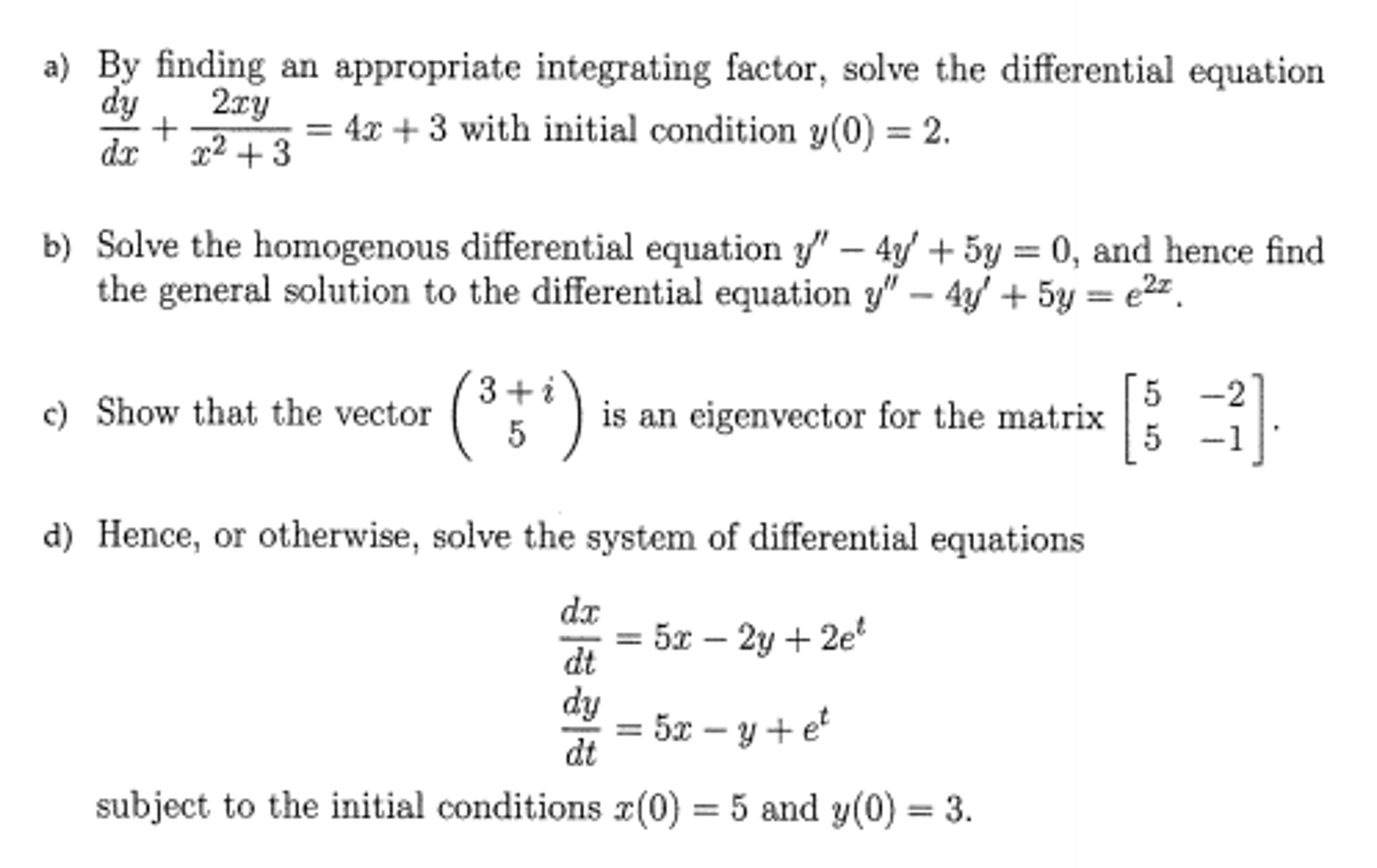


Solved By Finding An Appropriate Integrating Factor Solv Chegg Com



Find The Seprate Equation Of Line X2 2xy Y2 0 Brainly In



Prove That X2 Y2 Z2 Xy Yz Zx Is Always Positive Brainly In



Simplify X Y X Y X 2 Y 2 X 4 Y 4 2x 1 2x 1 4x 2
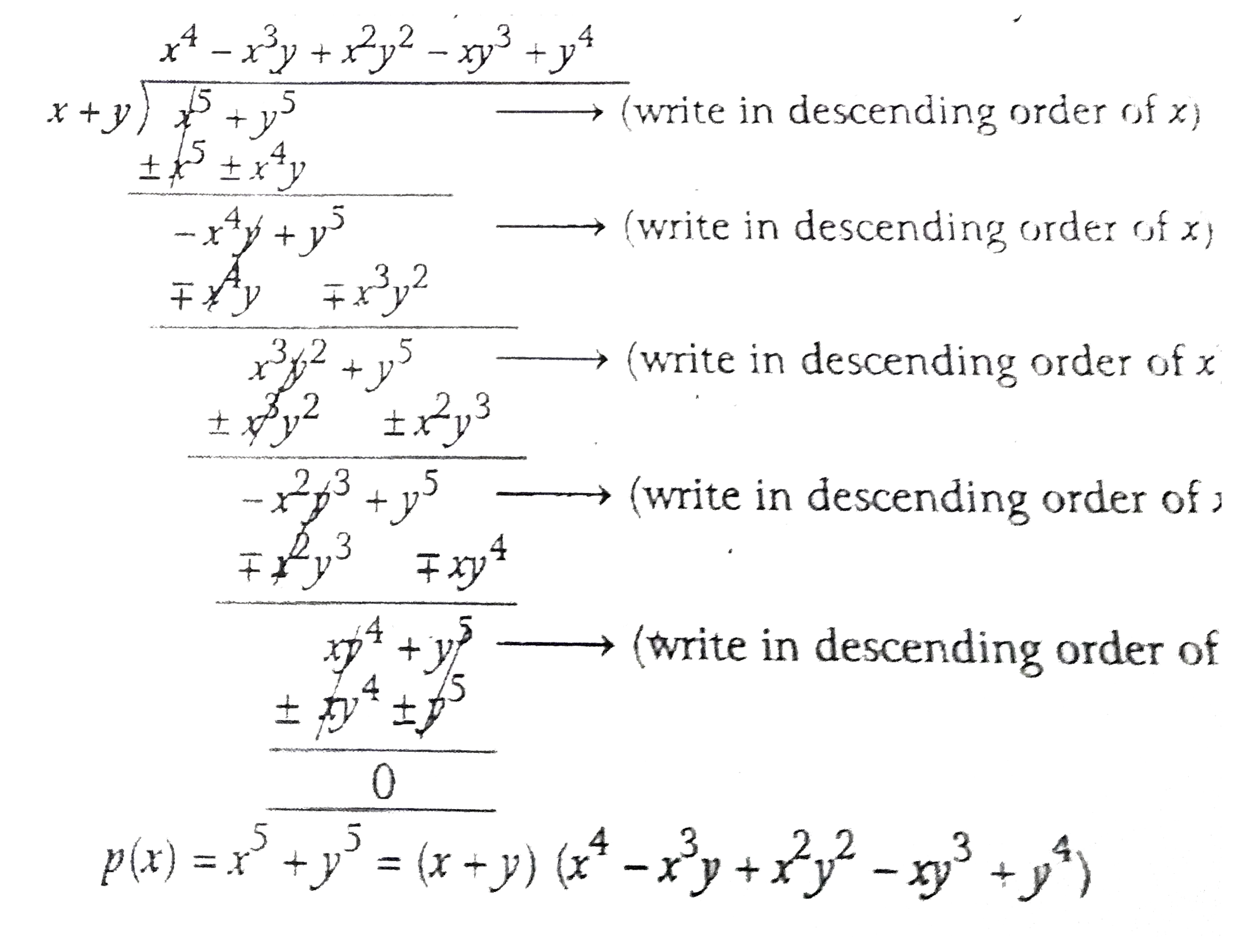


Factorise X 5 Y 5



How To Do Implicit Differentiation 7 Steps With Pictures
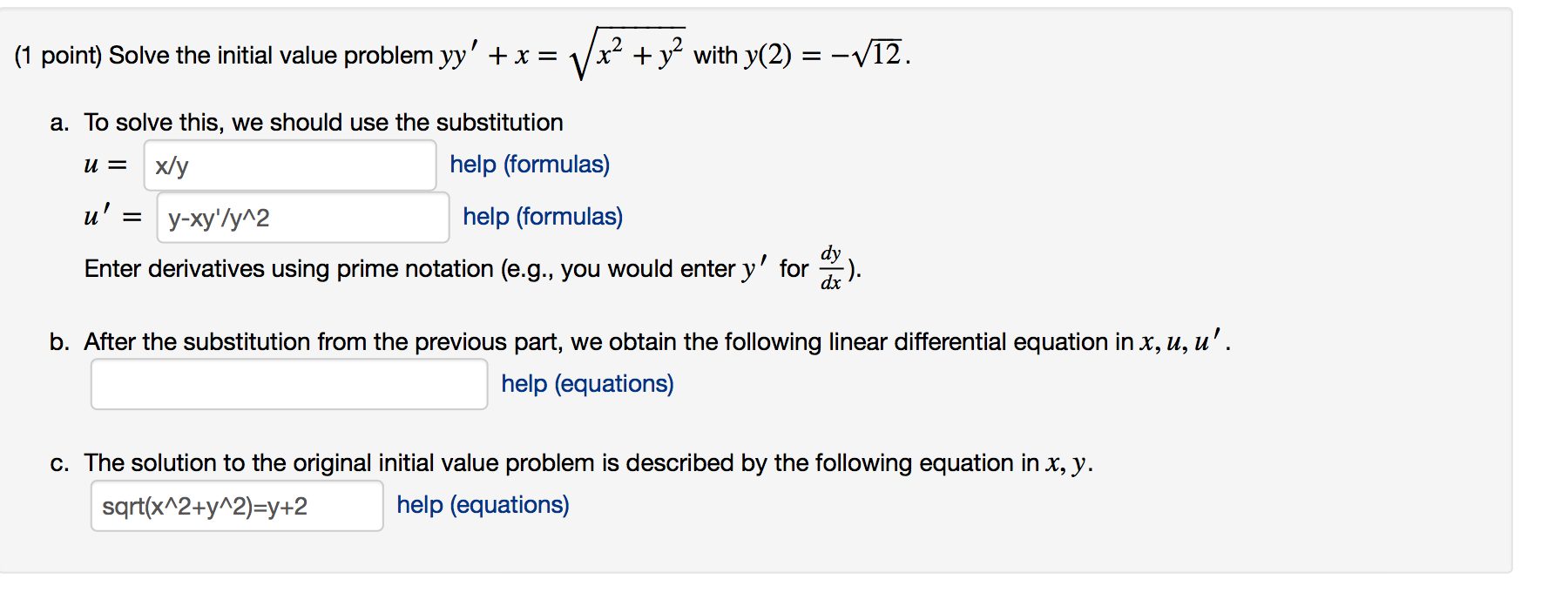


Solved 1 Point Solve The Initial Value Problem Yy X Chegg Com



Second Solution For Reduction Of Order X 2 1 Y 2xy 2y X 2 1 Youtube


